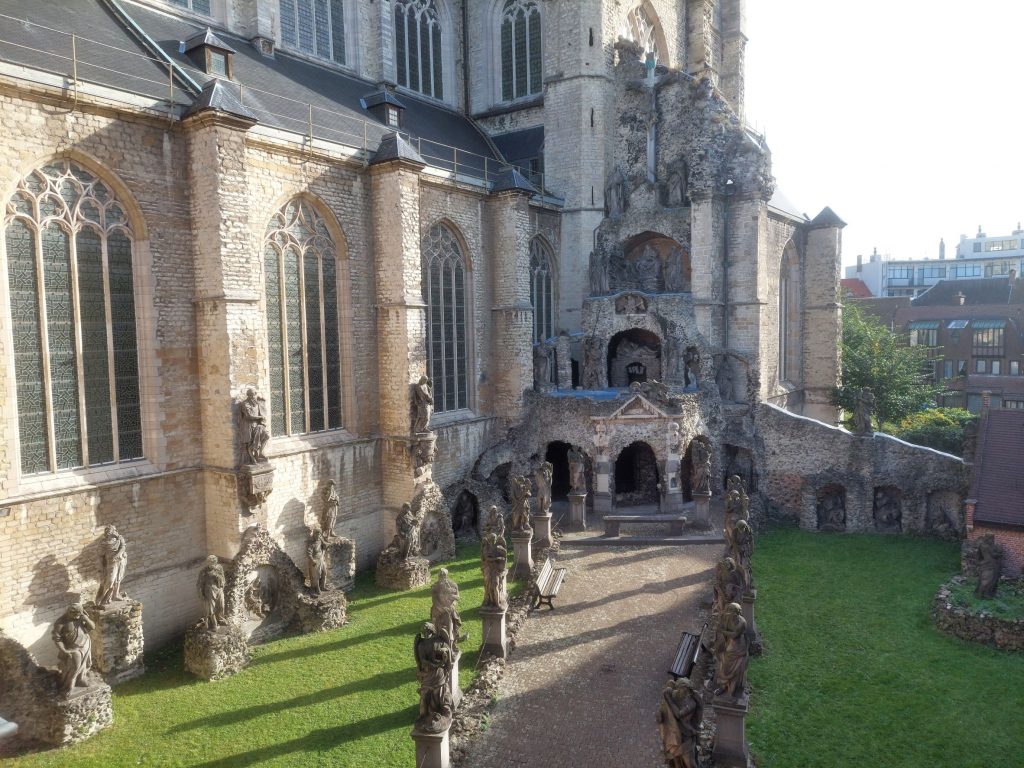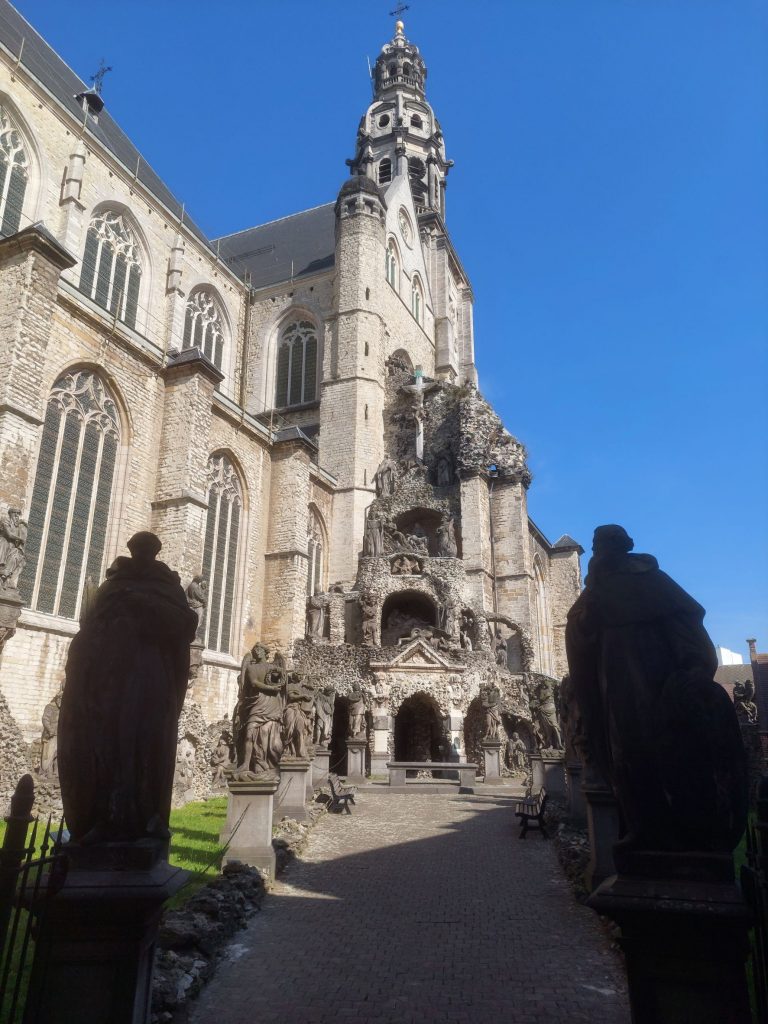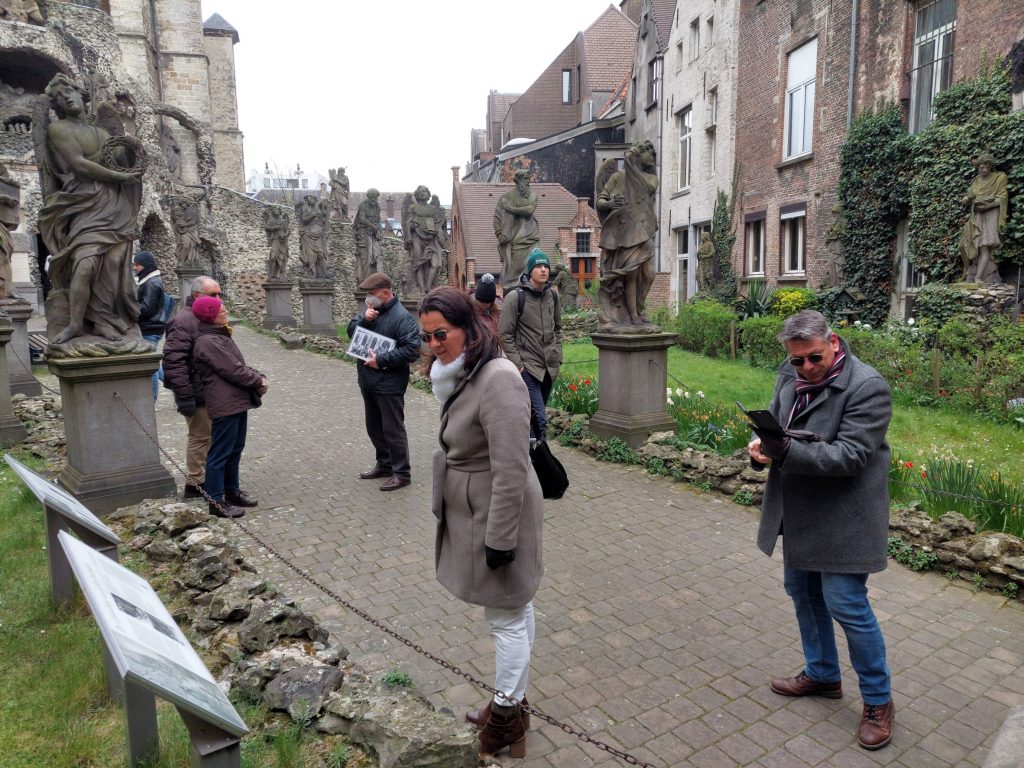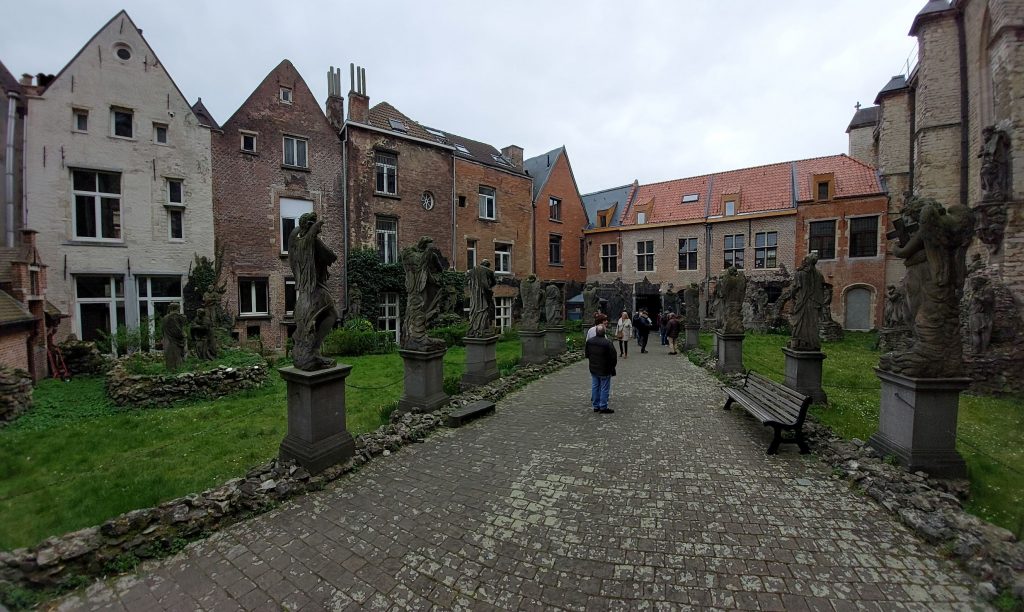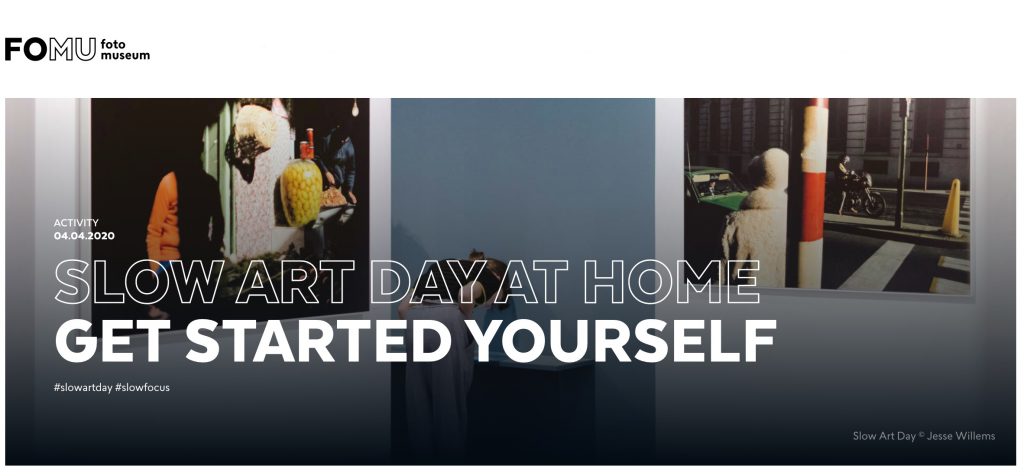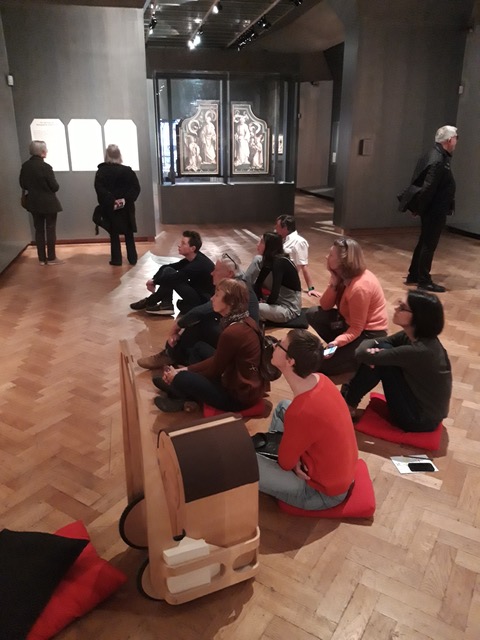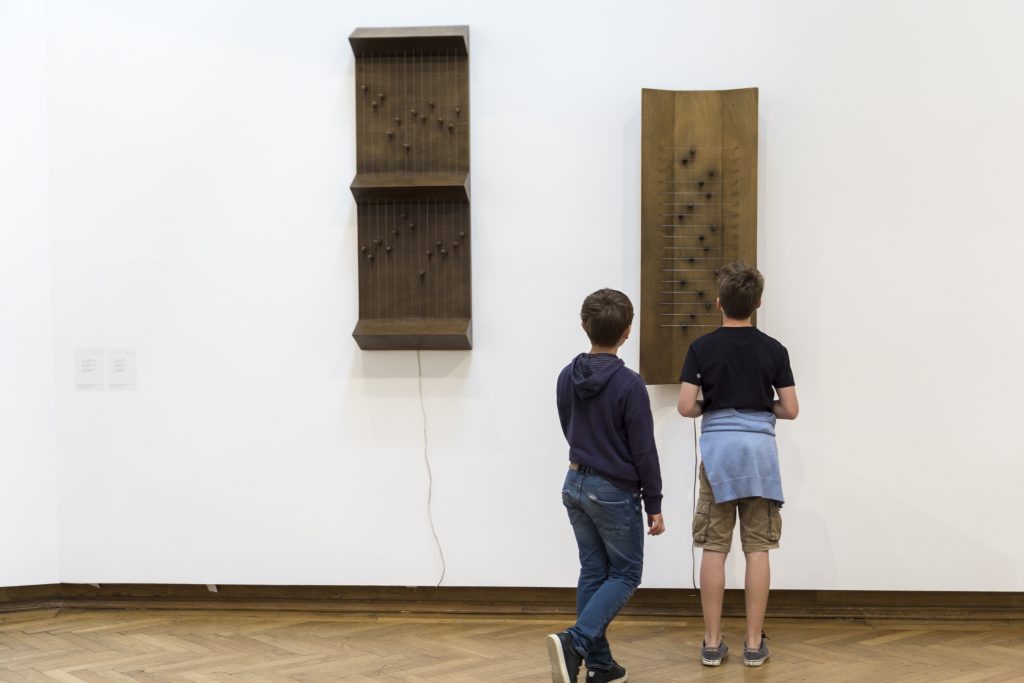Sint-Pauluskerk in Antwerp, Belgium, called on more churches to join the slow looking movement (more about that in a moment), while, at the same time, hosting its sixth Slow Art Day this year.
For their 2023 Slow Art Day, they invited visitors to take a closer look at two statues, one in marble and one in oak, of Rosa van Lima (the first Latin American canonized saint).



The slow looking sessions started with the marble statue, which depicts Rosa Lima holding Jesus as a child. Participants were encouraged to sit in chairs in front of the statue and look slowly for 10 minutes. They were provided the following optional, thought-provoking prompts to aid in the slow-looking, and were then encouraged to ask the guides about the person Rosa van Lima:
– What do you think the subject is?
– Why is the statue in this place?
– What did the artist want to say?
Next, the session moved to the statue in oak on the other side of the church, where visitors were invited to look slowly and discuss their impressions. The oak statue is part of a monumental depiction of the “Last Judgment: the ultimate baroque exhortation not to forget any sin during confession,” in the words of Armand Storck, scriptor for the church.
At Slow Art Day HQ, we love the team at Sint-Pauluskerk. Not only do they often send us the details in advance of their event, but, more importantly, they design events that take full advantage of the church environment to encourage contemplation and reflection.
To that point, we are also excited because, as mentioned, Storck and his team are taking a lead role in challenging more churches to join the Slow Art Day movement. In fact, Storck points out that while hundreds of museums participate in Slow Art Day, only three churches registered this year yet “what environment lends itself better to contemplative art experience than a church? “
We agree, and hope that more churches answer Storck’s question by joining our movement.
And we certainly look forward to what storck and team design for Sint-Pauluskerk’s seventh Slow Art Day in 2024.
-Johanna, Ashley, Jessica Jane, and Phyl

